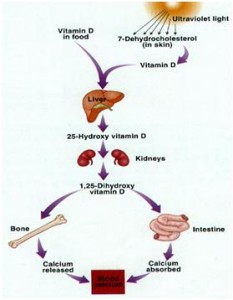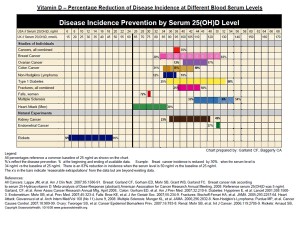 In the last few years a considerable consensus across the scientific community has begun to emerge concerning the fat soluble nutrient Vitamin D.
In the last few years a considerable consensus across the scientific community has begun to emerge concerning the fat soluble nutrient Vitamin D.
Vitamin D is unique – unlike ALL other vitamins very little comes from our food. Almost all of our Vitamin D is produced by the upper surface of our skin during direct exposure to UV radiation in strong sunlight. However in the UK and most of the USA the sun is too low in the sky from November until March to produce any Vitamin D from sunlight exposure. The fat soluble nutrient supplies are meant to rely on a summer exposure to increase our stores to supply what we need during the winter.
Papers published in the last few years confirm that many people in non-equatorial regions have very low Vitamin D levels – especially during the winter. People of African descent, now living in more northerly areas, are at highest risk as the darker the skin tone the slower the Vitamin D production. If there is little or no strong sunlight exposure Vit D deficiency will occur. This condition increases as a risk as you age, as older skin is less efficient at converting radiation into Vitamin D.
Vitamin D is well understood to contribute essential mechanisms for calcium metabolism vital for bone, muscle and nerve function – but recent research shows it is also critical to your immune response against viruses, bacteria and cancer.
Researchers have discovered that as you run low on Vitamin D your immune response weakens. Trials have proved that people taking “high dose” Vitamin D3 supplements (>2000 IU/day) are extremely resistant to colds and flu – and it now appears that resistance to some cancers is also proven.
The grassroots web site have produced a summary chart showing how risk for disease declines in the face of optimal vitamin D blood serum levels. Collated from a collection of recently published articles it easily demonstrates that establishing and maintaining optimal Vitamin D status is exceptionally beneficial for long term health and disease risk reduction.







1 Comment. Leave new
Wonderful post! Keep up the good writing. Thanks for sharing with us! Generally I don’t read article on blogs, but I wish to say that this
write-up very forced me to check out and do so! Your writing style has been amazed me.